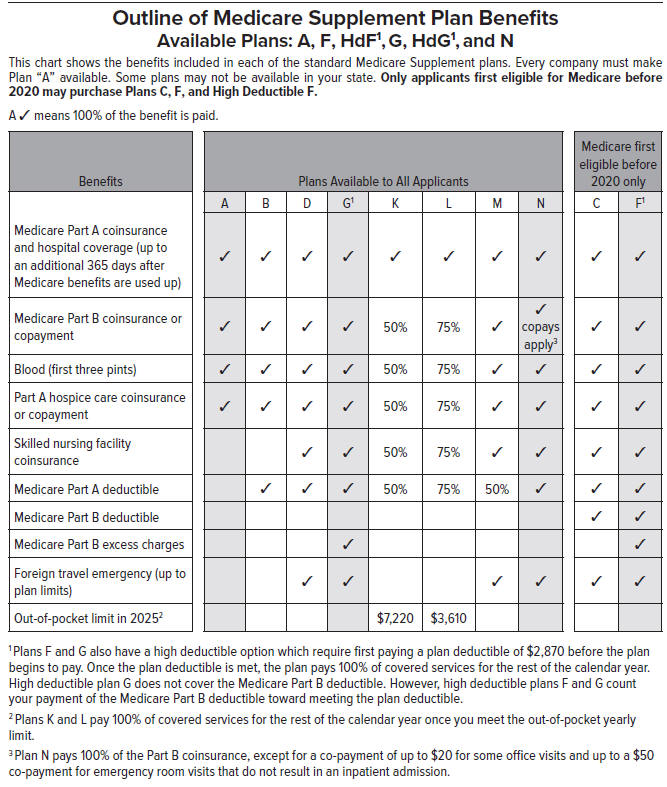|


Kirk M. Hale
Understanding the Four Parts of Medicare
Medicare, the federal health insurance program for individuals aged
65 or older, certain younger people with disabilities, and people
with End-Stage Renal Disease, is comprised of four distinct parts:
Part A (Hospital Insurance): This
covers inpatient hospital stays, skilled nursing facility care,
hospice care, and some home health care. Most people don't pay a
monthly premium for Part A if they or their spouse have worked and
paid Medicare taxes for a certain period ( 10 Years or 40 Quarters).
It's important to understand that while Part A helps with hospital
costs, it doesn't cover everything, and there are deductibles and
coinsurance involved.
Claims are filed here when there is an an overnight hospital stay.
Part B (Medical Insurance): This
covers certain doctors' services, outpatient care, medical supplies,
and preventive services. Most people pay a monthly premium for Part
B, which can vary based on income. Part B also has an annual
deductible and coinsurance for most services.
Claims are
generally filed here for all other services covered by Medicare
other than an overnight hospital stay.
Part A and part B are called Original Medicare
Part C (Medicare Advantage): These
plans are offered by for profit private insurance companies that
contract with Medicare to provide Part A and Part B benefits. Many
Medicare Advantage plans also include Part D (prescription drug
coverage) and may offer extra benefits like vision, hearing, and
dental. When you join a Medicare Advantage plan, you're essentially
choosing to receive your Medicare benefits through this private plan
instead of directly through Original Medicare. These plans often
have network restrictions, require referrals, and have different
cost-sharing structures (copays, deductibles, and coinsurance) that
can vary widely.
You must decide to either stay with Original Medicare or select an
Advantage plan. You cannot have both. The default choice when
getting Medicare benefits is Original Medicare. I call this the fork
in the road.
Part D (Prescription Drug Coverage): This
helps cover the cost of prescription drugs. It's offered by private
insurance companies that have been approved by Medicare. Enrollment
in Part D is voluntary, but if you don't enroll when you're first
eligible and don't have other creditable drug coverage, you may face
a late enrollment penalty. Part D plans have their own monthly
premiums, deductibles, copays, and formularies (lists of covered
drugs).
Original Medicare with Supplemental Insurance vs. Medicare
Advantage: A Closer Look
The decision between Original Medicare with supplemental insurance
(Medigap) and
Medicare
Advantage is a significant one with different trade-offs. Here's why
many find Original Medicare with a Medigap plan to be a more viable
choice:
1. Greater Freedom and Choice of Providers:
-
Original Medicare: You
can generally see any doctor or hospital in the United States that
accepts Medicare. This provides unparalleled flexibility,
especially if you travel frequently or have specialized medical
needs that might be best addressed by out-of-network providers in
a Medicare Advantage plan.
-
-
Medicare Advantage: These
plans often have network restrictions (HMOs or PPOs). Seeing a
doctor outside of the network may result in higher out-of-pocket
costs or no coverage at all. While some PPOs offer out-of-network
coverage, it's usually at a higher cost. Referrals from a primary
care physician are often required to see specialists within an
HMO.
-
2. More Predictable Out-of-Pocket Costs:
-
Original Medicare with Medigap: Medigap
policies are designed to help pay some or all of the out-of-pocket
costs associated with Original Medicare, such as deductibles,
coinsurance, and copays. This can lead to more predictable
healthcare expenses, as you may have little to no cost-sharing for
covered services, depending on the Medigap plan you choose.
-
Medicare Advantage: While
Medicare Advantage plans may have lower monthly premiums than
Original Medicare with a Medigap plan, they often have higher
out-of-pocket costs when you actually use healthcare services.
These costs can include copays for doctor visits, specialist
visits, hospital stays, and other services. There's also an annual
out-of-pocket maximum, but reaching it can still be financially
burdensome.
-
3. Simpler Administrative Processes:
4. Greater Stability and Less Frequent Changes:
-
Original Medicare and Medigap: Original
Medicare benefits are relatively stable, and while Medigap plan
premiums can change, the core benefits of each standardized
Medigap letter plan remain consistent year after year.
-
Medicare Advantage: Plan
benefits, provider networks, and drug formularies can change
annually. This means you need to review your plan each year to
ensure it still meets your needs. These changes can be disruptive
and require you to switch plans if your doctors are no longer in
the network or your medications are no longer covered.
-
5. Better Coverage for Serious Illnesses and Complex Medical Needs:
-
Original Medicare with Medigap: The
comprehensive coverage provided by Medigap plans can be
particularly valuable if you develop a serious illness or have
complex medical needs that require frequent and specialized care.
The lack of network restrictions and the predictability of costs
can provide peace of mind during challenging health situations.
-
Medicare Advantage: While
Medicare Advantage plans can offer good routine care, the network
restrictions and potential for higher cost-sharing for specialized
or out-of-network care might be a disadvantage if you face
significant health issues.
6. You may never get a chance to get a Medicare supplement policy if
you go with an Advantage plan depending on how long you have been
enrolled in one.
In Conclusion:
While Medicare Advantage plans can be attractive due to potentially
lower monthly premiums and the inclusion of extra benefits, Original
Medicare with a Medigap plan often offers greater freedom of choice,
more predictable out-of-pocket costs, simpler administration, and
more stable coverage. For individuals who prioritize access to a
wide range of providers and want more certainty about their
healthcare expenses, Original Medicare with supplemental insurance
is often the smarter and more strategic choice in the long run.
It's crucial to carefully consider your individual healthcare needs,
financial situation,
and
preferences when making this important decision. Consulting with a
knowledgeable insurance advisor can also be beneficial.
|
 |
 
Have a question? Call me at
1-800-728-9609
Click
here to start your free quote.
As an independent agent we have the
lowest rates.
We still
like to provide good old fashioned customer service.

2025 Basic Benefits
•Hospitalization Coinsurance for days 61-90 is ($419 per
day) and days 91 and after while using lifetime reserve days
is ($838 per day)
• Payment in full for 365 additional hospital days
• 20% coinsurance for physician and other Medicare Part B
services
Medicare Part A Hospital Deductible
• The 2025 deductible is $1676
Skilled Nursing Facility (SNF) Coinsurance
• $209.50 a day for days 21-100 in a Skilled Nursing
Facility in 2025
Medicare Part B Yearly Deductible
• The 2025 deductible is $257
Medicare Part B Excess Charges
• Difference between doctor's charge and Medicare's approved
amount
• Up to 15% above the Medicare approved charge which is the
doctor’s maximum charge
Foreign Travel Emergency
• Pays 80% of the cost of emergency care during the first
two months of each trip after you pay a $250 deductible
• Lifetime maximum of $50,000

Have a question? Call me at
1-800-728-9609 |

